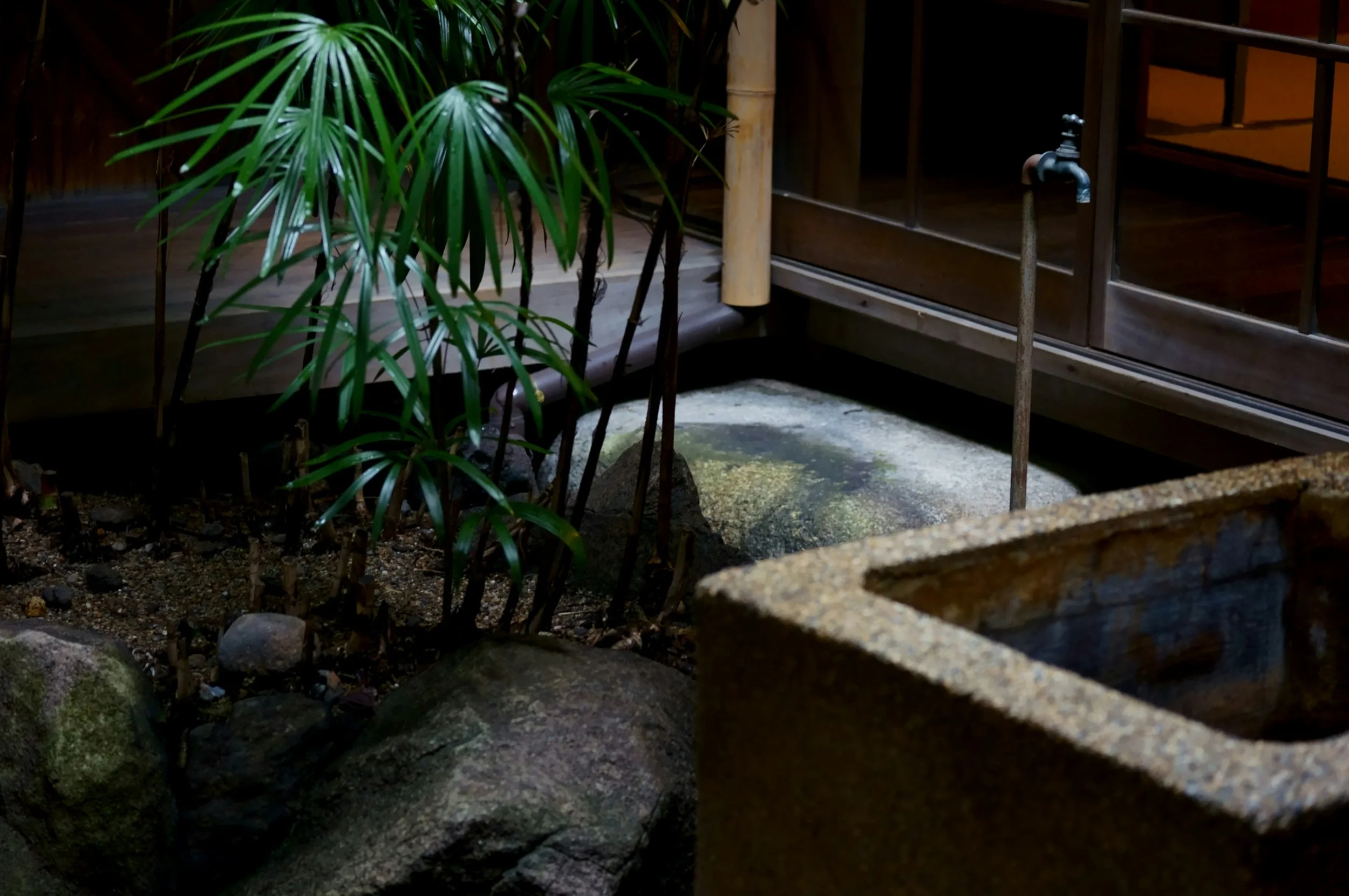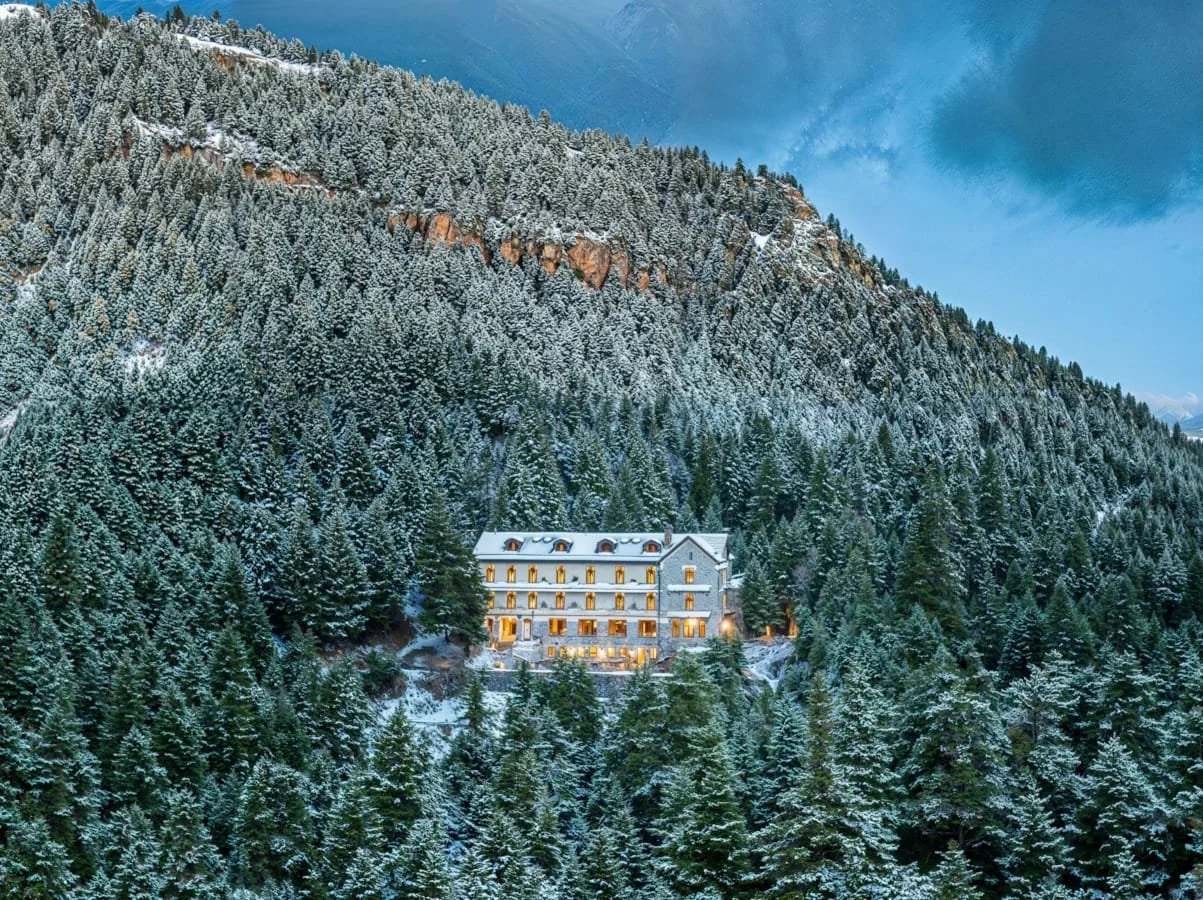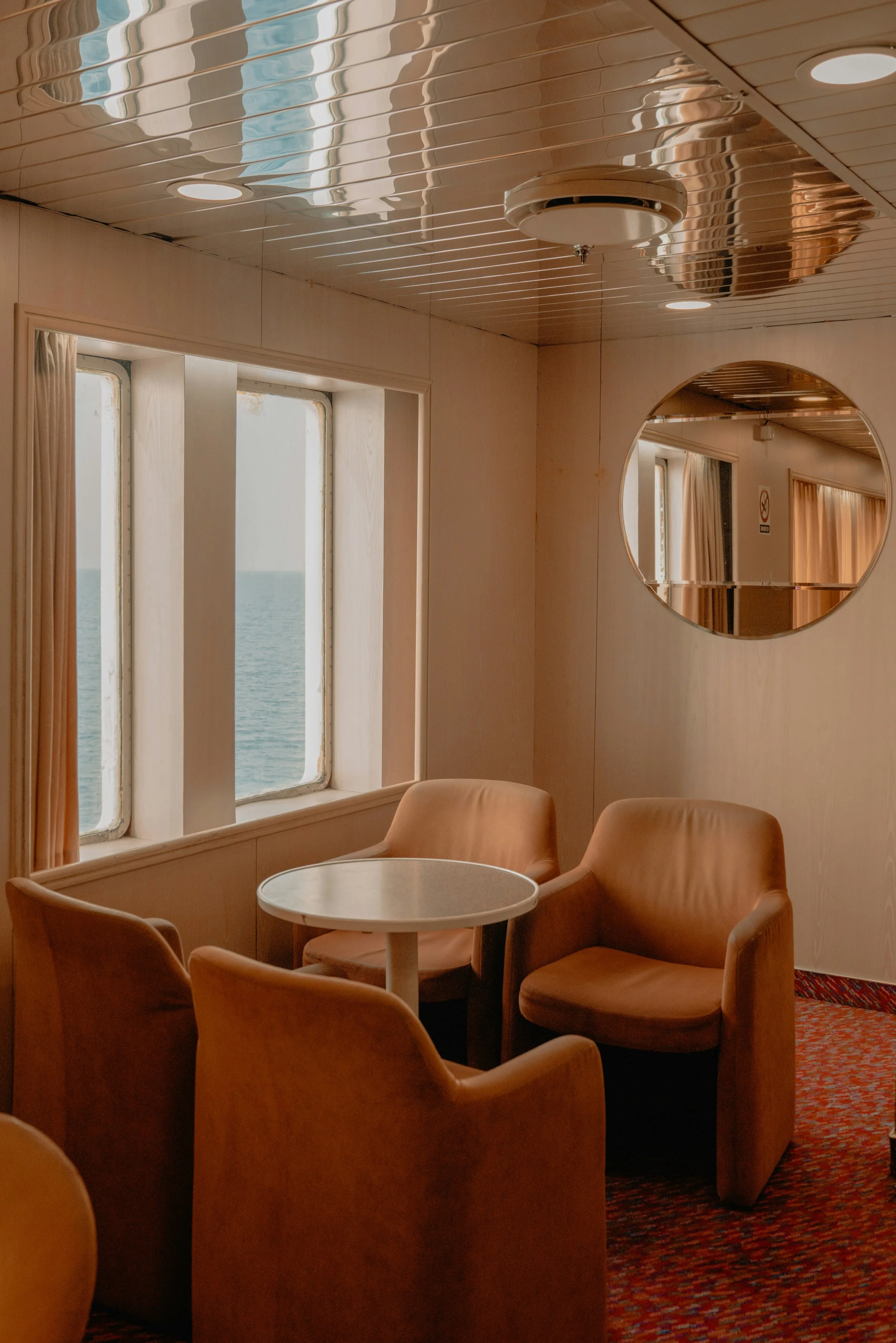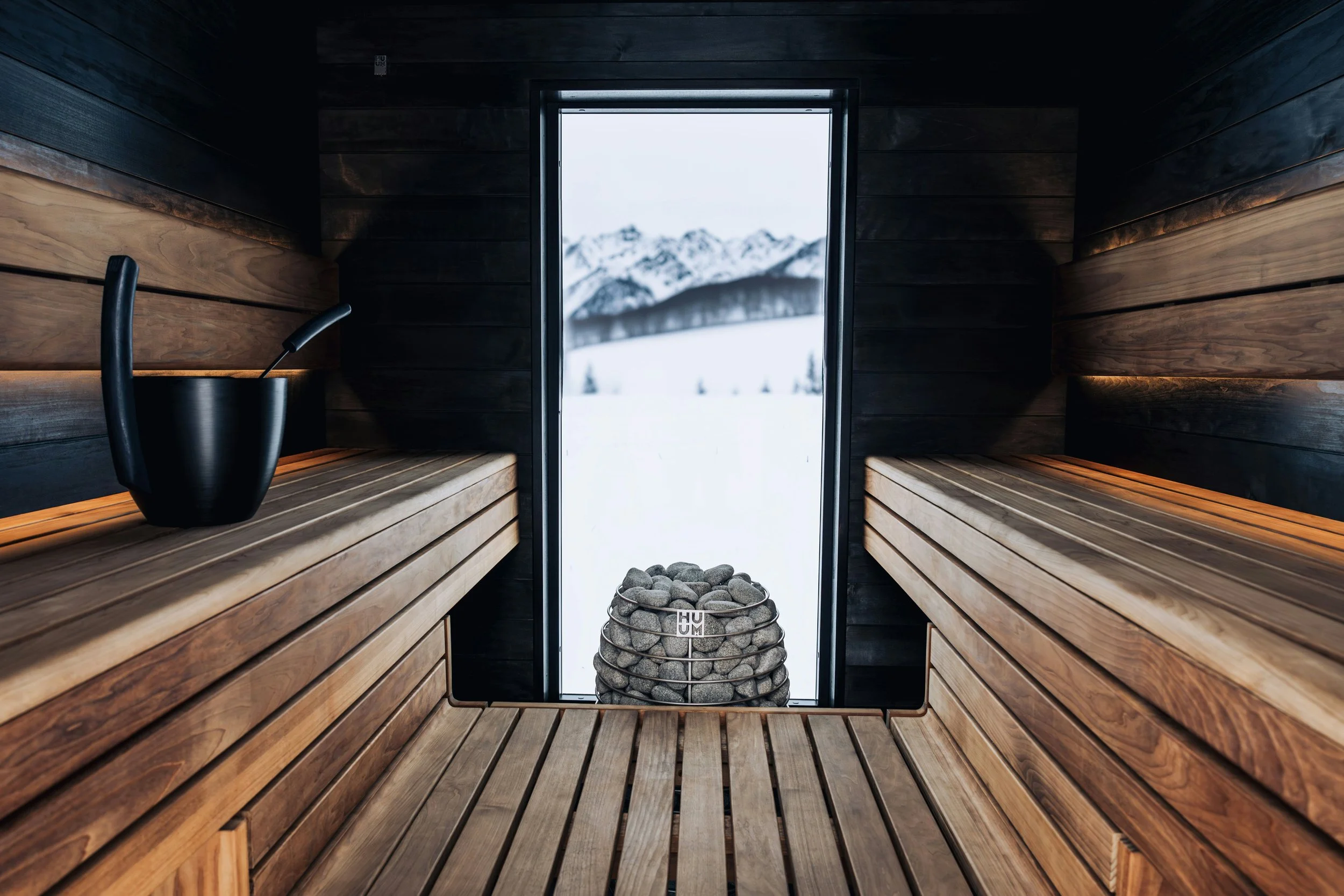Back to the Soft Future: How Severance, 70s Revivalism & Brand Worlds Are Rewriting Hospitality Design
We’re entering an era where hospitality is more than service—it’s stagecraft. A room is no longer just a room. It’s a set. A mood. A memory waiting to be activated.
From the eerie symmetry of Apple TV’s Severance to the velvet-drenched nostalgia of Milan Design Week 2025, today’s most compelling spaces are cinematic, conceptual, and deeply tactile. We’re witnessing a creative shift where retro-futurism, emotional materiality, and narrative space-making converge to shape how guests feel—not just where they stay.
So what does that mean for your next project? Let’s explore.
A still from “Severence” production design that blends mid-century with futurism and officecore
Severance as Experience Design Blueprint
Apple TV’s Severance—a dystopian dramedy about corporate amnesia—captured imaginations not just through plot, but through space. Its claustrophobic offices, chunky tech, faux-wood veneer, and seafoam carpets offered a mood board of the uncanny: retro, rigid, familiar-yet-strange.
Designers took note. And not ironically. Today, we see those same design cues—corporate brutalism meets domestic warmth—showing up in hospitality projects that are less “Scandinavian serenity” and more “mid-century fever dream.”
This isn’t nostalgia for nostalgia’s sake. It’s a strategic use of atmosphere to evoke emotion. A hospitality space that borrows from Severance doesn’t say stay here. It says step into a story.
From Milan With Memory
Loro Piana x Dimorestudio: La Prima Notte di Quiete at Milan Design Week 2025
Milan Design Week 2025 put these narratives on full display. Brands leaned hard into texture, memory, and surreal reinterpretations of the past.
Loro Piana collaborated with Dimorestudio on an immersive installation "La Prima Notte di Quiete” that transported visitors into a cinematic 1970s villa, blending luxurious textiles with decaying party props, moody lighting and soundscapes.
Range Rover presented a luxurious time portal—fusing aviation-era travel aesthetics with future-forward finishes. Think Concorde glamour meets showroom theatre. Celebrating it’s 55th anniversary, they took us back in time to 1970 when they launched their first model then zoomed us into the now, 2025, with their newest release vehicle.
Marimekko, collaborating with food artist Laila Gohar, created All the Things We Do in Bed—an immersive resting environment featuring a 30-foot bed wrapped in archival patterns, encouraging lounging, reflection, and play.
Even Gucci leaned into mood, presenting “Bamboo Encounters,” an installation exploring resilience through handmade bamboo objects that blurred craft and myth.
It was Milan being maximalist - but also delivering emotion.
Range Rover celebrating it’s 55th Anniversary at Milan Design Week with a time tavelling installation taking audiences from 1970 to 2025 in less than 10 minutes.
Hospitality Spaces Are Becoming Cinematic Worlds
Across hotels, spas, and branded environments, we’re seeing the rise of a new design language: spatial storytelling.
The spaces guests love most today are:
Conceptually rich – they draw from film, fashion, and literature as much as from design trends.
Materially intimate – velvet, walnut, glass brick, boucle; you’re meant to touch the mood.
Set-like – a bathhouse might feel like a scene from a forgotten sci-fi. A boutique hotel might echo 1970s Milanese elegance with a dash of David Lynch.
Whether it's a serene retreat or a maximalist lounge, the best experiences don’t feel designed—they feel curated.
An example of a wellness space incorporating a dark pallette and old-world fixtures, signalling authenticity and going back to childhoods.
So Why This Cultural Mood Now?
Three big forces are driving this retro-futuristic, emotionally resonant approach:
Post-sterility rebellion – After years of blank white minimalism, people are craving texture, warmth, and narrative.
Digital overload – In a screen-saturated world, tactile, analogue-feeling spaces offer relief.
Generational memory – From Gen Z’s love of Y2K to Boomers’ affection for 70s tones, multi-decade nostalgia offers universal design fluency.
As Dezeen noted in its Deep Space trend report, we’re gravitating toward interiors that feel like “glamorous time machines”—spaces where 1970s materials (velvet, chrome, smoked mirrors) meet speculative design and offbeat surrealism. This isn’t just a trend. It’s a cultural recalibration.
Manna Arcadia: A Hotel in the Peloponnese here in Greece is a good example of combining mood, brand story, guest journey for emotive and cinematic effect.
What This Means for Brands and Developers
If you're designing or developing a space—especially in hospitality, wellness, or retail—this is the moment to think like a director, not just a developer.
Ask:
What emotional arc are we offering?
What world are we inviting people into?
How can materiality, light, and memory be used strategically?
The commercial payoff? Spaces that feel like stories are more likely to be shared, remembered, and returned to.
How I Can Help
I work with brands, hospitality developers, and creative teams to craft environments that feel not just beautiful—but meaningful. Spaces where design is used as a narrative tool. Where the experience is layered, intentional, and deeply felt.
Let’s shape a world your guests won’t want to leave.







